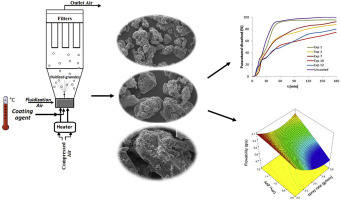- Home
- Blog
- News
- Basics
- Sources
- Agencies, Regulatory & Organisations
- CERSI Excipients Browser
- Excipient Report
- Excipient DMF List
- EXCiPACT Certified Companies
- Excipient Documentation
- Excipient EINECS Numbers
- Excipient E-Numbers
- FDA Inactive Ingredient List
- FDA GRAS Substances (SCOGS) Database
- IPEC Americas
- USP - U.S. Pharmacopeia
- Definitions
- Whitepapers / Publications
- Supplier
- Services
- Media
- Events
- 1st pharmaexcipients Poster Award
- Event Calendar
- Events featured by pharma-excipients
- 4th Annual Formulation & Drug Delivery Congress
- DDF Summit
- ExcipientFest Americas
- ExcipientFest Asia
- Global CompliancePanel
- International Conference and Exhibition on Pharmaceutics & Novel Drug Delivery Systems
- Formulation & Drug Delivery USA Congress
- Laboratory Medicine 2018
- Making Pharmaceuticals Europe
- Making Pharmaceuticals Exhibition
- Pharma Integrates
- PharmaExcipients China @CPhI China
- TTC Technology Training Center
- Jobs
- Online Sourcing
- Contact
01. October 2018
In this study, a set of 24 experiments was designed to understand the combined effect of different process parameters, i.e. material feed rate, liquid-to-solid (L/S) ratio, screw speed, and screw configuration on the residence time distribution, granule morphology, and particle size distribution in twin screw wet granulation of microcrystalline cellulose. It was shown that residence times were longer at higher L/S and lower screw speeds. However, the most dominant effect on mean residence time...
22. August 2018
The effects of excipients on the accuracy of tablet subdivision are severely underinvestigated. In this study, placebo tablets were prepared using a combined mixture design of fillers and binders to evaluate the effect of these excipients on subdivision accuracy. The responses assessed were mass loss, mass variation, tablet fragmentation, and increased friability. Dicalcium phosphate dihydrate (DCP) gave rise to more uniform and denser tablets than microcrystalline cellulose (MCC), thus...
26. May 2018
Hot-melt coating is a novel and cost-effective solvent-free coating technique. Commonly used excipients for hot-melt coating are lipid substances. In this work, modified fluidized-bed system was applied for coating, and additional components were used to melt and convey the excipient to the fluidized-bed apparatus. Granules containing 20% (w/w) paracetamol were coated with Precirol® ATO 5 at 9.1% (w/w) coating level. The aims of this study were to define a relationship between the three...
07. February 2018
What is your currrent way of organising sample demands of your potential customers? Are you happy with the efforts put in and results achieved?
The sample procedure in the pharmaceutical excipient industry has not changed a lot over the past decades - apart fom some particular online tools of some manufacturers.
24. September 2017
Abstract Thermoresponsive polymers are a class of smart materials that exhibit change in their physical properties with temperature, which make them unique and useful materials in a wide range of biomedical applications. Soluplus®, a thermoresponsive block graft copolymer with poly(vinyl acetate) PVAc and poly(vinyl caprolactam) PVCL block grafted on a poly(ethelyne glycol) PEG backbone in a ratio of 30:57:13 respectively, is marketed by BASF Corporation, it aids in solubilizing and increasing...
20. February 2017
Abstract Adsorption of lipid-based formulations, which are usually liquid, onto silicas has been extensively investigated in the past decade to convert them into solid dosage forms. There are conflicting reports on the ability of commercially available porous silicas, like Neusilin® US2, to release lipid formulations completely, especially after long-term storage. In this study, the release of a model drug, probucol, from different formulations of medium chain lipids and a surfactant,...
18. October 2016
Abstract The objectives of the present study were to develop a controlled-release bilayered tablet of aceclofenac (AFN) 200 mg with dual release and to gain a mechanistic understanding of the enhanced sustained release capability achieved by utilizing a binary mixture of the sustained release materials. Different formulations of the sustained-release layer were formulated by employing hydroxypropyl methylcellulose (HPMC) and hydroxypropyl cellulose (HPC) as the major retarding polymers. The in...
20. August 2016
Abstract Active pharmaceutical ingredients (APIs) with strongly pH-dependent aqueous solubility can face the problem of precipitating from solution when the pH changes from acidic in the stomach to neutral in the intestine. The present work investigates the effect of two polymeric excipients – polyvinylpyrrolidone (PVP) and Soluplus – on the ability to either prevent precipitation, or to control the size distribution of precipitated particles when precipitation cannot be prevented. Two...
21. March 2016
Background: Quince seed mucilage biopolymer (QSMB), famous for ameliorating coughs and controlling asthma symptoms, has not been processed by scientific methods and rules into a local oral tablet. Objectives: The purpose of this study was to investigate and compare the mechanical properties of QSMB with different size fractions of the mucilage powder, dried by oven or by freeze drying, to achieve a tablet. Materials and Methods: The granules dried by oven and freezing processes were classified...
15. March 2016
As dry granulation as a continuous process becomes steadily more important, the interest of different materials and their processing is growing. Binders are of high importance as they have to compensate granule hardening, reduce the fines, and ensure adequate tablet tensile strengths. A simple formulation was used for roll compaction/dry granulation with subsequent tableting to produce granules and tablets, containing paracetamol (70% w/w), a filler and a binder (10%). With this formulation...





